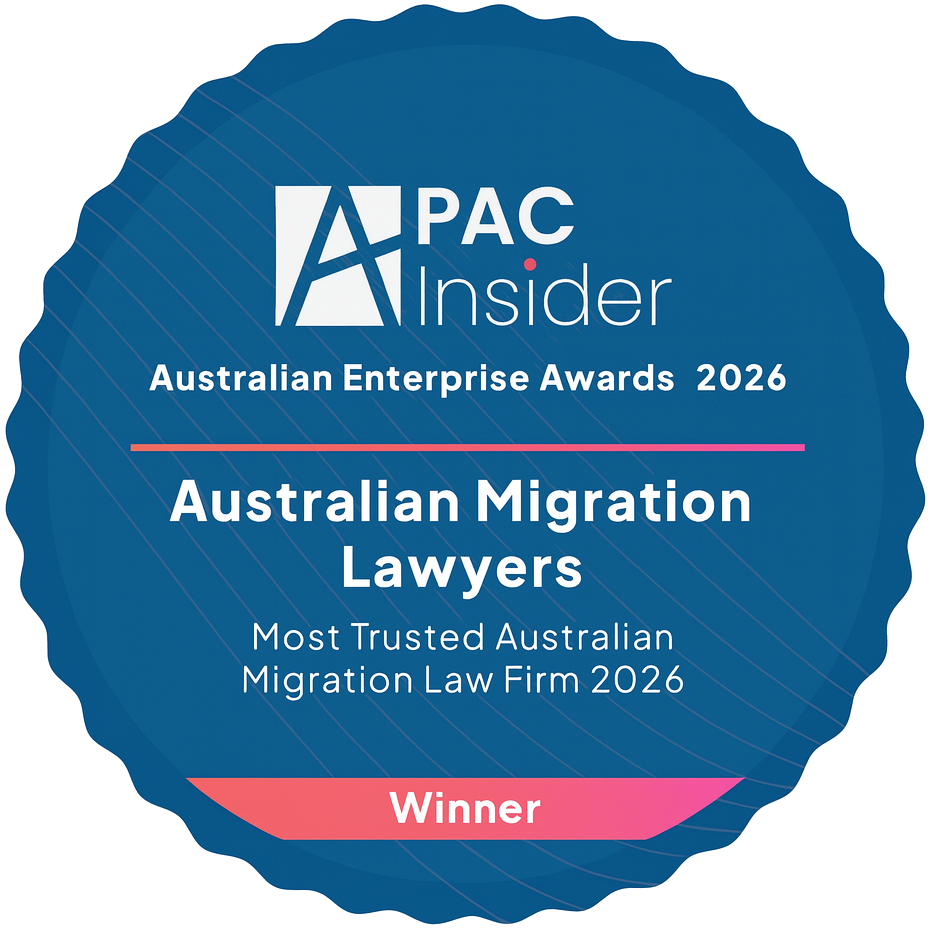Australia's largest independent migration law firm. Open 7 days! Book here.
Need help? We are available 7 days a week.

.webp)

Winner of Most Trusted Australian Migration Law Firm 2023-2026

Ranked 1st for migration law in 2023, 2024 & 2025

Ranked in the top migration lawyers 2023, 2024 & 2025

Ranked the best migration law firm 2024 & 2025

There are a number of employer sponsored visas available to an Australian business looking to sponsor skilled workers to fill a position in their business. These include regional visas, such as the subclass 494, or subclass 482 Skills in Demand visa available throughout Australia. The suitability of each visa will generally depend on the position to be filled, as the occupation must be listed on the relevant skilled occupation lists published by the Department of Home Affairs.
The requirements and criteria for each visa subclass can be found on our website page, however this article aims to give an overview of the costs of sponsorship in order to answer any questions that an Australian employer may have when it comes to the costs of sponsorship. The costs for a visa application can be significant, so it is important to understand what’s involved in order to ensure that sponsoring workers is a cost effective way of addressing your worker shortages.
The costs involved can generally be broken down into three categories. The first are Department fees, which must be paid to the Australian Government for the sponsorship, nomination and visa application fees. The second are legal and professional fees, which will be applicable if you choose to be assisted by migration lawyers or agents. While this is an additional expense, it can be worthwhile, as a refusal of another application will generally not allow for a refund of any Department fees that have already been paid. Lastly, there will be additional costs associated with meeting certain criteria, such as the fees for health assessments or police clearance certificates, that will need to be completed during the visa application.
These costs will greatly vary depending on the visa that you are applying for. Often regional visas will have lower costs, which are designed to encourage workers and employers to work in regional areas. They can also vary depending on whether the primary applicant intends to include their partner or dependent children in the application.
The government fees can be broken down as follows. It is worth noting that payment of these fees is subject to a surcharge as follows depending on the payment method used.
For the subclass 482 Skills in Demand visas and subclass 494 Skilled Employer Sponsored Regional (Provisional) visas, the sponsoring Australian employer must first apply to become an approved business sponsor, or Standard Business Sponsor. If the sponsoring employer is party to a labour agreement, there is no requirement to also become an approved sponsor. There is also no Department fee for lodging a labour agreement request.
This status will last for a period of five years, after which it must be renewed, and is required when lodging nominations for these visas.
The application charge to apply to become a Standard Business Sponsor is currently $420.
When an approved sponsor nominates a visa applicant for a position within their business, they will generally need to pay a nomination application charge, as well as a Skilling Australians Fund (SAF) levy. The nomination fees for nominations in the three employer sponsored visas can be summarised as follows.
The application charge for the nomination is $330 for all three streams of the SID visa. The SAF levy charge is determined by the annual turnover of the business. If the turnover is above $10m, the SAF is charged at $1,800 per year. If below $10m, the levy is $1,200 per year.
Unlike the subclass 482, there is no nomination fee for the 494 visa. The SAF levy charge is determined by the annual turnover of the business. If the turnover is above $10m, the SAF is charged at $1,800 per year. If below $10m, the levy is $1,200 per year.
The subclass 186 visa will only have a nomination fee of $540 if the position is not located within a regional area. The Direct Entry stream must also pay the nomination fee regardless of the employment location.
The SAF levy is paid at the same rate as that of the subclass 494, outlined above.
[free_consultation]
If you are interested in getting more information about a work or skilled visa, get in touch with Australian Migration Lawyers for a consultation.
[/free_consultation]
The relevant visa application fees for these three visas are outlined below.
In addition to the above fees, the applicants may be required to pay an additional subsequent temporary application charge of $700 per applicant, depending on their visa history. This will generally be applicable when the applicant is applying for their second visa while onshore, which does not include their initial visa application if it was made while they were offshore.
In general, fees relating to the sponsorship and nomination must be paid by the sponsoring employer, and cannot be charged to the visa applicant. The visa application fee, as well as the subsequent temporary application charge, can be paid by the visa applicant.
Agent or lawyer fees will vary depending on the provider, however it is important to ensure that if you choose to be supported by an expert in your immigration applications, you choose someone who has a variety of experience in the field of employer sponsored visas. This will ensure that you have the greatest chance of success, and receive well rounded and tailored advice to ensure that you are choosing the best option to suit your needs.
At Australian Migration Lawyers, we work on a fixed-fee basis rather than billing hourly to provide our clients with certainty about what the total costs associated with their visa application will be. We strive to be flexible, so we offer payment plans based on financial need.
There can be additional costs related to health examinations, police certificates, and English language tests for the visa applicant. For some visas, such as the 186 Direct Entry and 494,, the overseas worker will also need to apply for a relevant skills assessment. These will vary depending on the required assessments and providers. These examinations and clearances will be required to meet the health and character requirements of the visa.
It is also worth noting that you must meet the proposed salary for the position must meet the required minimum of $76,515 per annum plus superannuation.
Before looking to sponsor workers on any employer sponsored visa, you should consider any and all cost-saving methods that you can implement in order to ensure that the process is cost-effective. The benefits of addressing worker shortages are self-explanatory, and can sometimes be crucial to a success of a business, but implementing some of these processes can help to make the benefits even greater.

The requirements for employer sponsored visas may appear simple on the surface, however they are greatly influenced by the Department of Home Affairs policy. These policies can change frequently and with minimal warning, and are not always clear to independent applicants or employers looking to benefit from the immigration program.
At Australian Migration Lawyers, we provide valuable guidance and support to make the entire process as seamless as possible. We have a high success rate with our applications, and have dealt with a wide array of complex occupations and situations. Our goal is to ensure that we help you optimise the application to avoid unnecessary costs, including the costs associated with a delay if your application is incomplete or insufficient.

We have created comprehensive visa guides that outline the ins and outs of visa applications. Get yours today.